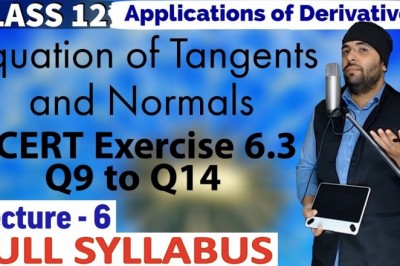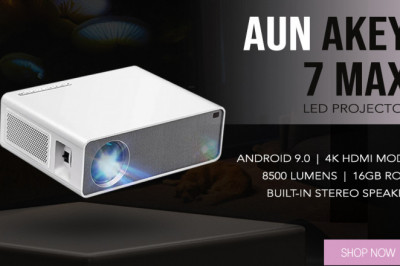views

Therise of blockchain has often been compared to that of the internet, but formany years, even among its first few years, the growth rate of the internetwas less than 56% annually, in the sametimeframe. And now for the $69 billion question— can our current infrastructure handle it?
In some ways, our current infrastructure andstandard technology practices may not be set up to handle the increase in theutilization of blockchain technologies into the future. However, none of theseissues seem to be unpreventable.
For example, the real-time nature of blocks being added to blockchains may require more uninterruptibleforms of power supply (UPSes). That being said, UPSes are already commonplace inindustries such as health care — and the technology for them is improving.
Houston, WeHave Bigger Problems
Amore discussed and significant issue concerning blockchain technology and ourcurrent infrastructure is blockchain’s relative lack of scalability compared tothat of conventional databases. The issue lies in the way transactions arerelatively slow — very slow — compared to traditionaldatabase-facilitated transactions because of some of the very qualities thatmake blockchain technologies so revolutionary. That is to say, dozens and eventhousands of block producers, such as EOSblock producers, verify transactions in an immutable and precisely limited way.
Unlikethe centralized tech that makes up a database, blockchain has multiple agentsvalidating the same transaction blocks rather than a single agent manipulatinga single set of data. Furthermore, the blocks themselves are limited in sizecompared to the more unlimited record sizes allowed by databases, preventingmore data in the same amount of code space from being handled in fewer actions.
However,even this major issue is being solved. For example, serverless cloud computingtechnology, involving multiple machines usingcode practices that are more on-demand than conventional ones, portends animpending solution to this problem with blockchain technologies. Furthermore,specific solutions are in working order now.
Forexample, the Lightning Network was created as a much faster alternative toconventional blockchain technology, by enabling acquainted users to set up aplan that allows a layer of technologically recognized trust integrated withinthe blockchain that provides faster transaction speeds. What’s more, Ethereum 2.0 — the platform’s highly awaited upgrade fromproof-of-work to proof-of-stake — stands to create its own norm-busting solutionsto scalability.
Also,the high amount of computing power needed to support blockchain technologiesshouldn’t be an issue, as blockproducers take ownership by handling eachcrypto and token transactionon their own systems. Not only will companies not need to maintain so manyon-premise servers in the future, but they also won’t need to pay for servicesprovided by either in-house personnel or even cloud-based services as much.
Becauseof these savings, many smaller companies won’t need to have as much capital tostart a blockchain-enabled business. Indeed, one of the main benefits ofblockchain technology and decentralized finance (DeFi) itself require fewercosts in paying third-party intermediaries to verify transactions.
Database,Meet Blockchain. Blockchain, Meet Database. Let’s All Just Get Along.
Oneaspect of blockchain technologies that more stakeholders need to understand isthe benefits of blockchain vs. those of databases, which is the norm forstoring data. Blockchains can indeed do nearly everything thatdatabases can. You can even make a to-do app, a typical programming use case, withblockchain technology.
Althoughdatabases have encryption processes built with them to secure code, there aremany ways that database security can be compromised, considering how morevulnerable SQL database tables or even NoSQL documents are compared to therelatively simple, immutable, singularly-focused, locked-down code used in blockchaintechnologies.
Whiledatabases are more flexible with the kinds of actions that can be made on datathrough CRUD-based architecture — Create, Read, Update, and Delete — blockchainsystems typically only do the Create (write) and Read actions, so their datacannot normally be altered or removed.
Also,because most of the programs we use that require persisted data need it to bealterable, updatable, and removable as well as created and read, databases andthe client-server apps that interact with them provide more flexibility andfunctionality of features than do blockchain-based apps. Furthermore, databasesare currently faster with app actions and transactions, at least until theyet-to-be mastered scalability problem of blockchain technologies is moredefinitively solved.
Onthe other hand, in terms of transparency, one of DeFi blockchain’s benefits —blockchain definitely rules the day. A database requires central administratorswho have a lot of say over what you can do with your transaction data and whokeep a lot of the transaction process hidden.
Sowill blockchains replace databases? It doesn’t seem likely, especially in thisstage of blockchain technology development. Because both data storage paradigmshave their own benefits and drawbacks, it comes down to the particular usecase.
Forexample, databases are generally appropriate for platforms such as a social media network or otherenterprises requiring fast,continuous flow of data without requiring dozens or thousands of verificationsof the same piece of data, storage of confidential information, relatively lessof a focus on validation of data, and detailed, complex, relational data.
Incontrast, blockchain technologies are best for transfer value, storage value, monetary transactions,trusted data verification, voting systems, and the fluid, transparent,independent transacting that decentralized apps (dApps) allow. Moreover,there’s nothing that says a company can’t have both technologies working forthem, each with its own advantages.
Inany case, it will be necessary for managers and developers to investigate thebenefits of tools made for either blockchain or database systems based on theindividual needs of the department or enterprise.
Whilemany of the changes necessary to accommodate blockchain critical infrastructureare unproblematic — or problems related to them are being solved — many sourcesagree that the mental and cultural assimilation of blockchain technology intopeople’s lives needs a lot of work.
Moreover,because of the growing recognition and use of blockchain technology’s benefitsby governments worldwide, all businesses will need to be prepared to interface with the government onblockchain.
Luckily,though, many reliable sources are already advising businesses on what to do.For example, they recommend sharing the multiple benefits of blockchain technologieson the ecosystem level through business-to-businesscollaboration. After all, aplatform that creates trust blockchain-encrypted signatures for transactionsneeds to agree on how a particular business is done.
TheLearning Curve Is Rising but So Are the Learners — Along With the Pioneers WhoGet It
Althoughthe lack of technical talent in blockchain technology poses challengesnow, it won’t be like that for too long. Universities offering courses inblockchain are on the rise, even 25% in one year (2018). Moreover, most developers in a recentStack Overflow survey said they were interested in developing withblockchain technologies themselves.
OneDeFi leader who knows that the lack of technical talent isan issue but also it’s correctableis Marc Blinder, the CEO of AIKON.However, lack of tech talent is definitely not an issue when it comes to thiscompany. One area of blockchain that it’s ahead of the game in is identitymanagement.
AIKON’sORE ID (a secure login toolfor blockchain) is a flexibleand straightforward but effective signup and login interface that allows usersto access any DeFi blockchain platform in a variety of ways.
Asblockchain technologies expand globally, so will the need for such robust butuser-friendly tools to perform basic but essential functions to facilitate dataaccess in an era still unfamiliar with using blockchain.
Nomatter what industry your enterprise is part of, blockchain technology has alot to offer, and the game is already on. Don’t just build your company on thefoundation of today — help build a foundation for your company’s future.












